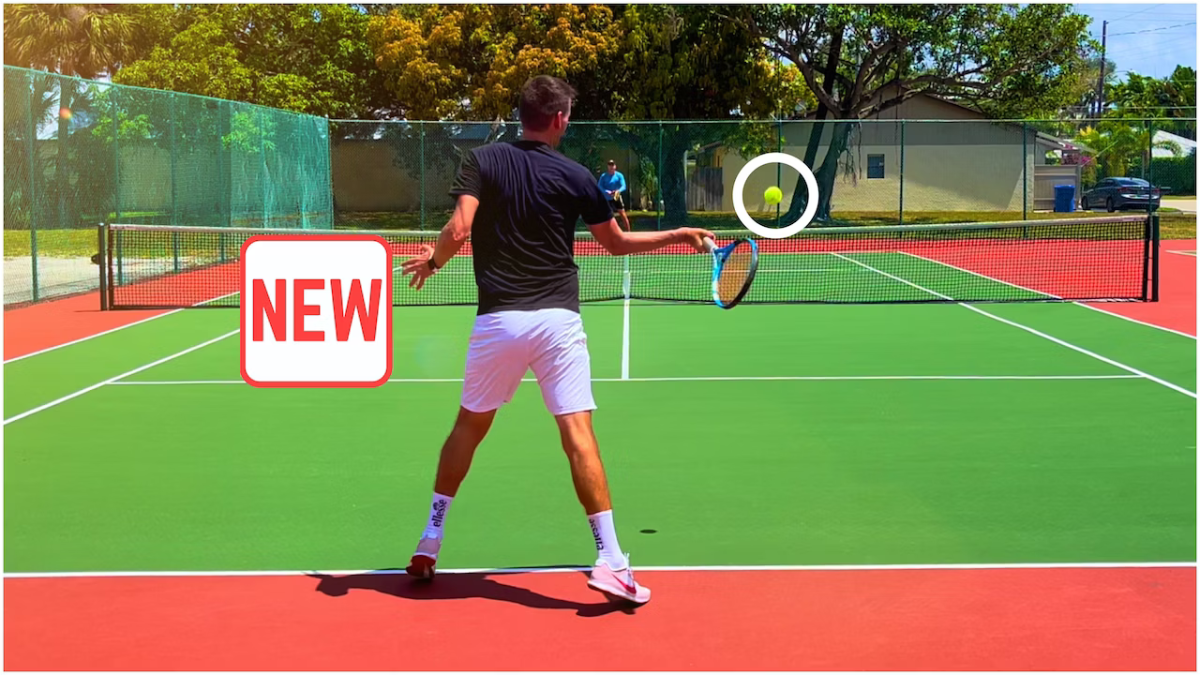Welcome to the VH Stories, As an avid tennis enthusiast, I have always been captivated by the strategic aspect of the sport. Tennis tactics play a crucial role in determining the outcome of a match, often making the difference between victory and defeat. In this blog, we will delve into the world of tennis tactics, exploring various strategies and techniques that will undoubtedly enhance your gameplay. Whether you’re a seasoned player looking to refine your skills or a beginner eager to understand the intricacies of the game, this guide will equip you with valuable insights.
I. Understanding the Court and Its Impact on Tactics
- Court Dimensions and Surface Types
Before delving into tactics, let’s familiarize ourselves with the tennis court. The dimensions and surface types significantly influence gameplay and strategic decisions. Tennis courts can vary in size, with standard dimensions being 78 feet in length and 27 feet in width for doubles matches. However, some courts may differ slightly.
Additionally, the surface type (e.g., grass, clay, hardcourt) affects how the ball bounces and the speed of play. For example, clay courts are generally slower, allowing players more time to set up their shots, while hardcourts offer a faster and more predictable bounce.
II. Key Tennis Tactics and Strategies
- The Power of Consistency
Consistency is the bedrock of effective tennis tactics. While flashy shots may make for an exciting highlight reel, consistently hitting shots within the court’s boundaries puts immense pressure on opponents. Aim to keep the ball deep, varying the pace and spin to disrupt your opponent’s rhythm and force errors.
- Mastering the Serve
The serve is arguably the most critical shot in tennis, as it sets the tone for the entire point. Work on developing a reliable serve, using both flat, slice, and kick serves to keep your opponent guessing. Varying your serve’s placement, speed, and spin will keep your adversary off-balance and vulnerable to attack.

- Analyzing and Exploiting Opponent’s Weaknesses
To gain a competitive edge, keen observation and analysis of your opponent’s weaknesses are essential. Identify patterns in their gameplay, such as a weaker backhand or difficulty with high balls, and exploit these weaknesses tactfully. However, avoid underestimating your opponent, as they may adapt during the match.
- The Art of Court Positioning
Strategic court positioning is a hallmark of professional tennis players. Move efficiently and anticipate your opponent’s shots by being in the right position at the right time. Maintaining an optimal court position allows you to control the point and create opportunities to finish points with well-placed shots.
- Utilizing the Split-Step Technique
The split-step technique is a fundamental footwork tactic that maximizes your ability to react quickly to your opponent’s shots. It involves a slight jump or hop just before your opponent makes contact with the ball. This action readies your body to move swiftly in any direction, increasing your defensive and offensive capabilities.
- Adapting to Different Playing Styles
In the vast world of tennis, players come with diverse playing styles, ranging from aggressive baseline hitters to crafty serve-and-volley specialists. Developing the ability to adapt your tactics to counter these varying styles is crucial. Be prepared to adjust your gameplay and exploit your opponent’s weaknesses based on their approach to the game.
III. Tactics for Different Phases of the Game
- Tactics for Serving
During your service game, consider adopting the “Serve Plus One” strategy. After a powerful serve, follow it up with an aggressive shot that takes advantage of the weak return. By applying pressure immediately, you can take control of the point early on.
- Tactics for Returning
When returning serves, focus on getting the ball back into play deep and with precision. This forces your opponent to defend, limiting their options and potentially creating opportunities for you to take control of the point.

- Tactics for Baseline Play
For baseline play, the “Crosscourt and Down-the-Line” tactic is highly effective. Hit most of your shots crosscourt to keep the ball away from your opponent’s stronger side. Then, when the opportunity arises, change the direction by going down the line to catch them off guard.
- Tactics for Net Play
For players comfortable at the net, implementing the “Approach and Volley” tactic is recommended. Approach the net after hitting a deep groundstroke, putting pressure on your opponent to hit a difficult passing shot. If they don’t respond well, capitalize on the opportunity by finishing the point with a well-executed volley.
IV. Mental Aspects and Game Management
- Staying Composed Under Pressure
Maintaining composure during intense moments is critical to your success on the court. Practice mental techniques like deep breathing, focusing on one point at a time, and visualizing successful outcomes to keep your mind calm and clear.
- Game Management and Smart Shot Selection
Effective game management involves understanding the match’s flow and momentum. Adjust your tactics accordingly and choose shots that are high percentage, minimizing the risk of unforced errors. This disciplined approach will prevent giving away points needlessly.
Conclusion
Tennis tactics are an art form that, when mastered, can elevate your game to new heights. By understanding court dynamics, embracing key strategies, and developing mental fortitude, you can transform your performance on the court. Embrace the learning process, practice diligently, and remember that even small tactical improvements can lead to significant results. So, step onto the court with confidence, armed with a strategic arsenal, and unleash your full potential as a tennis tactician. Happy playing!




